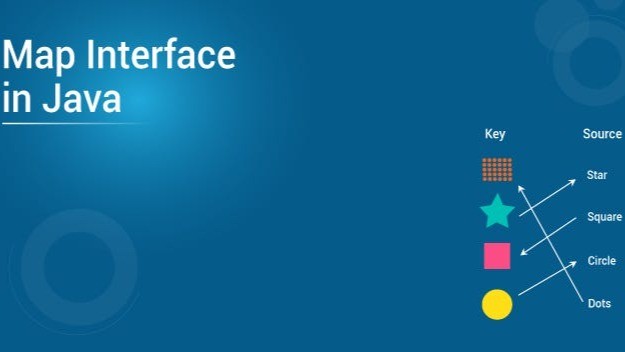
Mastering Java Maps: Key Implementations, Methods, and Best Practices
Gurunath Kadam
Strategic Manager of Learning & Development | Subject Matter Expert | Oracle & Microsoft Certified | Educator | Software Developer | Corporate Trainer | Technical Speaker
Collections: A Guide to Map in Java
What is a Map in Java?
In Java, a Map is an interface that represents a collection of key-value pairs where each key is unique within the Map, and it maps to exactly one value. As part of the Java Collections Framework, it provides various methods to manipulate and retrieve data based on keys.
Here are some common implementations of the Map interface:
HashMap: Stores key-value pairs in a hash table, allowing O(1) average time complexity for insertion and lookup operations. Ideal for scenarios requiring fast access, like caching.
Example:
import java.util.HashMap;
import java.util.Map;
?
public class HashMapExample {
??? public static void main(String[] args) {
??????? Map<String, Integer> map = new HashMap<>();
??????? map.put("Alice", 30);
??????? map.put("Bob", 25);
??????? map.put("Charlie", 35);
?
??????? System.out.println("HashMap: " + map);
??????? System.out.println("Age of Alice: " + map.get("Alice"));
??? }
}
TreeMap: Maintains keys in a sorted order (natural ordering or by a specified comparator), allowing O(log n) time complexity for insertion and lookup. Useful for maintaining a sorted list of entries.
Example:
import java.util.Map;
import java.util.TreeMap;
?
public class TreeMapExample {
??? public static void main(String[] args) {
??????? Map<String, Integer> map = new TreeMap<>();
??????? map.put("Alice", 30);
??????? map.put("Bob", 25);
??????? map.put("Charlie", 35);
?
??????? System.out.println("TreeMap (sorted by key): " + map);
??? }
}
LinkedHashMap: Maintains the insertion order of keys, meaning it preserves the sequence in which keys were added. Useful when you need to maintain a predictable order of entries.
Example:
import java.util.LinkedHashMap;
import java.util.Map;
?
public class LinkedHashMapExample {
??? public static void main(String[] args) {
??????? Map<String, Integer> map = new LinkedHashMap<>();
??????? map.put("Alice", 30);
??????? map.put("Bob", 25);
??????? map.put("Charlie", 35);
?
??????? System.out.println("LinkedHashMap (insertion order): " + map);
??? }
}
Methods of Map:
Understanding these methods and implementations allows you to choose the appropriate Map type based on your application's performance needs and behavior requirements.
Frequently Asked Questions about the Map Interface in Java
Q1: Why doesn’t the Map interface extend the Collection interface in Java Collections Framework?
A1: The Map interface does not extend the Collection interface because they serve different purposes. The Map interface is designed to handle key-value pairs, requiring both a key and a value to store entries. For example, to add an entry to a HashMap, you use put(Object key, Object value), which needs two parameters.
In contrast, the Collection interface manages individual elements and uses methods like add(Object o), which requires only one parameter. Additionally, Map provides methods such as keySet(), values(), and entrySet() to offer various views of the map's data, which are not applicable to the Collection interface.
Q2: What are common exceptions thrown by operations on Java Map?
A2: Here are some common exceptions you might encounter:
Q3: Why are String, Integer, and other wrapper classes considered good keys for HashMap?
A3: String, Integer, and other wrapper classes are ideal as keys for HashMap because:
Q4: Can we use any custom object as a key in HashMap?
A4: Yes, you can use any custom object as a key in a HashMap, provided it adheres to the equals() and hashCode() contract:
Immutability of the custom object is beneficial but not required. If the object is immutable, it naturally adheres to these requirements.
Conclusion
Understanding the Map interface in Java is key for efficient data management. It offers various implementations like HashMap for fast access, TreeMap for sorted data, and LinkedHashMap for maintaining insertion order. Each has distinct advantages depending on your needs.
Key methods like put(), get(), and remove() provide flexible data manipulation, while being mindful of exceptions such as NullPointerException and ConcurrentModificationException ensures robust usage.
For best performance, use immutable classes like String and Integer as keys, or ensure custom objects adhere to the equals() and hashCode() contract. Mastering these concepts allows you to harness the full power of Java’s Map interface.
?
?
Java Trainer at EduBridge Learning Pvt. Ltd.
7 个月Very informative